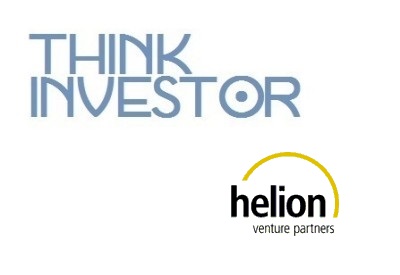Note: Before I begin, I would like to clarify the difference between market potential and revenue estimate. I have often seen entrepreneurs use the two terms interchangeably.
![]()
Market Potential
Market Potential is about estimating the size of the overall market opportunity. It is a sum total of the potential revenues of all players who are addressing that opportunity, if all the potential customers were to buy. I.e. If you were selling ‘affordable’ golf kits for first-time golfers, then you could estimate market potential as follows (all numbers are indicative for illustration and do not represent actual market) :
- There are about 20 millon golfers across the top 10 golfing markets in the world. Additionally, about 100,000 new people take up golf every year across the top 10 golfing markets in the world.
- About 25% of these find the cost of golf kits expensive. If you take this as the addressable market at USD 400 a kit for 5 million buyers, we are addressing a USD 2 bn market opportunity, even if you look at only those who find the price of current golf kits too high.
- Additionally, the ‘high-quality at lower price’ value proposition is likely to attract regular and casual golfers too i.e. 20 million golfers. This opens up a USD 8 billion market among existing golfers. And that’s a market growing at 15% pa.
- However, given that most people who want to play golf do not take it up because the current kits cost upwards of USD 1500, we believe that a USD 400 kit will explode the market and we would be able to encourage 10 times the number of people to start playing golf. I.e. by redefining the price-point, we can create an additional market potential worth over USD 500 mn.
- i.e. with an ‘affordable and high-quality golf kit’, we will be playing into a market that’s roughly USD 8 – 10 billion in the top 10 golfing markets of the world.
Revenue Estimate
Revenue estimate is about how much of this market potential do you plan to target. Here’s how you could think about it:
- We intend to launch this product in Japan, the world’s largest and fastest-growing golfing market. There are 3 million active golfers in Japan and over 50,000 new golfers are added every year.
- We believe that with an affordable golf kit, we could double the size of the golf market in Japan.
- In year one, we intend to attract 5000 customers, going to 20,000 customers in year 2 and selling to 100,000 new and existing golfers in year 3. These will be in the top 5 golfing markets in Japan. In year 4, we intend to take the concept to US and Europe, with a target to sell over 500,000 kits in year 4, across all markets we are present in.
- Thus, our revenue estimate (at current prices) is USD 2 mn in year 1, USD 8 mn in year 2, USD 40 mn in year 3 and USD 200mn in year 4. (In comparison, the leading golf kits brand is doing USD 2 bn in revenues currently)
Estimating the size of the market, and then predicting how much revenue the startup can achieve and at what growth rate is indeed a tricky exercise. But going wrong on this could either kill your company, or if in a rare case you have underestimated your revenues, you may end up raising more capital than necessary and thus diluting more equity at an early stage of the venture.
It is therefore very, very critical that entrepreneurs focus on working and reworking on the market size and revenue potential based on sound assumptions and with minute detailing.
Many startups make the mistake of taking broad brush reports from large consulting or research firms, and estimate the size of their market on the basis of those reports. Often we hear entrepreneurs mention “According to Gartner, healthcare is a $80Bn industry with a 23% growth rate”. Now, while this could be broadly true, for an investor, and even for the startup, these figures have little relevance. Here’s why…
In most market segments, the investors would be broadly aware of the scale potential. At a startup stage, investors will most likely invite a startup for a meeting only after they have assessed that the concept does address a large market. Hence, stating the obvious, especially in segments that are very obviously large does not add any value. E.g. For a startup in the education sector, highlighting in minute details the number of schools, number of students and growth rate in India is wasting precious time in the first meeting with investors. Assume that investors who are meeting a startup in the education space know the potential of the opportunities in the domain.
Investors don’t get any comfort from market estimated from industry research data. They want entrepreneurs to build up their estimates based on their insights and conviction – on how their concept will alter the dynamics of the market they wish to operate in.
How then do you estimate the market potential? Simply by being specific about your segment and making some assumptions on the specific segments and the revenues per customer/consumer. E.g. If your concept is about premium home tuition, instead of saying education in India is a $18 Bn market, it will be prudent to state “With over 250,000 students in the top 10 cities in schools with fees above INR 10,000 a month, at INR 2500 per student, the market potential is roughly over INR.500 – INR.600Cr per annum. At an all-India level, the same translates to a market potential of well over INR.1000 Cr.”
Some Points To Consider When Estimating Market Potential
- Clearly define what problem you are solving… and for whom – this will give you a good idea of the number of customers with that problem in the geographies that you plan to be available in.
- Estimate the practical reach e.g. while there may be a 100,000 people in your target audience spread across 50 cities, you may want to take the top 5 or top 10 cities and see how many people you have within your target audience. This of course gives you the total market potential, if 100% of potential customers were to buy.
- Now, apply some filters i.e. ability to pay, ability to reach via media, etc. E.g. while there may be 60,000 potential customers in the top 10 cities you identified, and you may be planning to use a combination of media, if the total reach of these media vehicles is 50%, the total potential of the market is really 30,000 customers.
You could also apply some price filters to test the elasticity of the demand in comparison to price. I.e. work up alternate scenarios to reflect the increase / decrease in demand in case the price were to be moved up or down; and then evaluate which scenario makes a better business case. [Note: For different situations you may have very different parameters for a good business case. In some cases, rapidly acquiring customers, even if margins are lower, would be a key criteria (often relevant in categories; it is important to achieve scale to be relevant – e.g. e-commerce – lock in potential customers on whom profitability can be increased later)].
Now, if the product is of a repeat purchase nature, you would need to make some assumptions on the number of times the customers would buy the product / service in a year. In doing this, it is critical to map the reality or in case of new product categories, to do some qualitative and/or qualitative research to validate your assumptions on the number of repeat purchases within a year.
All the above will need to be worked and reworked at different levels of assumptions often to arrive at what seems like a practical market estimation.







